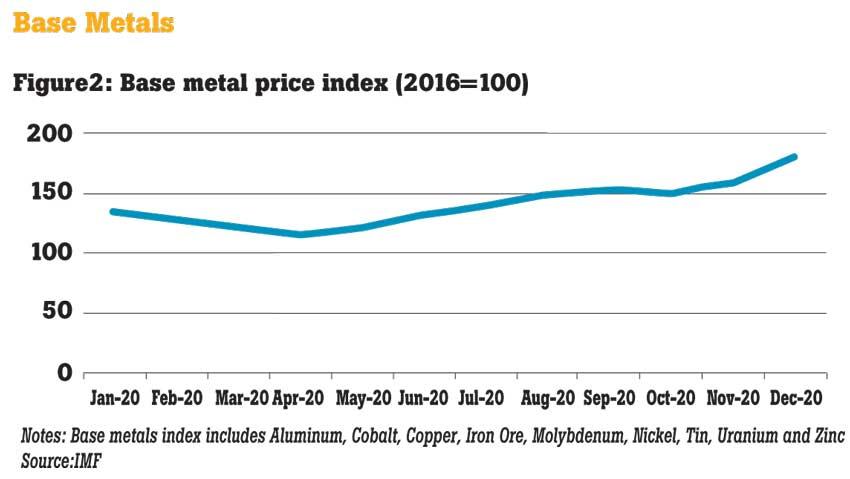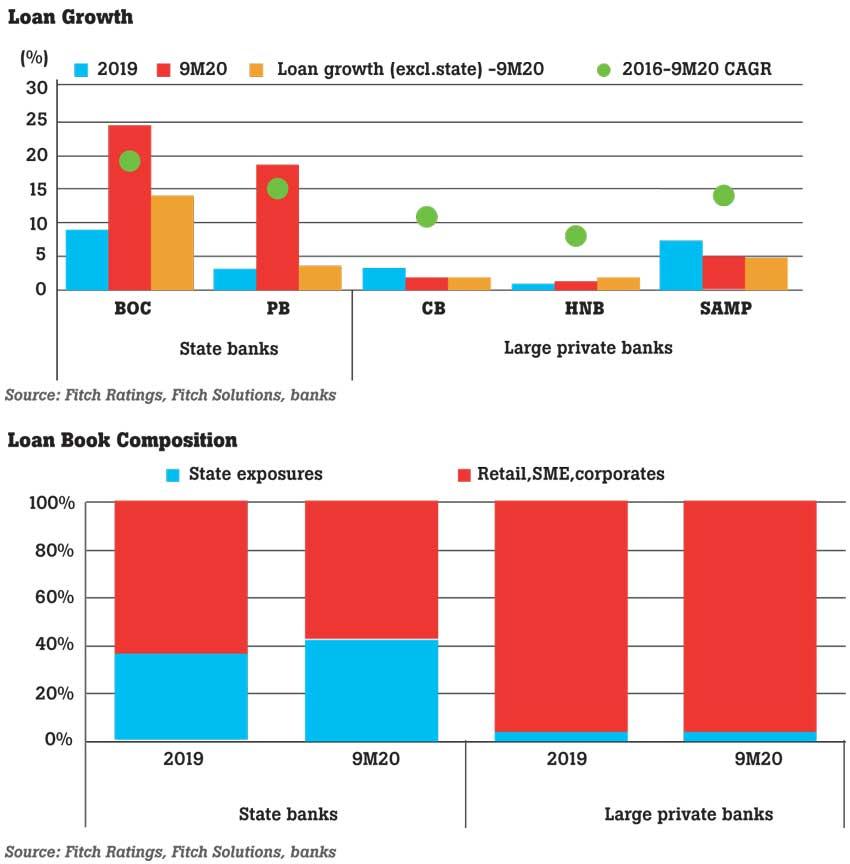10 Mar 2021 - {{hitsCtrl.values.hits}}


Fitch Ratings said the two State-owned licensed commercial banks—Bank of Ceylon (BOC) and People’s Bank—would continue to lead credit growth compared to their closest private lending giants—Commercial Bank, Hatton National Bank and Sampath Bank— as they assume a higher risk appetite, while the State directed lending for pandemic-affected would
keep the loan growth ticking.
According to a latest report, which took the five largest commercial lenders in the country into consideration, the rating agency said the State banks’ risk appetites are higher than their private counterparts given their higher loan book concentration and unsustainable balance sheet expansion.
“We expect State banks to continue to record higher loan growth relative to the private banks, on increased demand for credit from State and State-owned entities, alongside the potential for these banks to be called upon to lead in supporting individuals and businesses affected by the pandemic,” the rating agency said.
In an earlier report released in December 2020, Fitch forecasted acceleration in credit by the banking sector for 2021. The Central Bank put the number at 14 percent, which translates into Rs.864 billion.
The two State lenders accounted for nearly a third of the Rs.178 billion disbursed under the Central Bank supported re-finance scheme titled, ‘Saubagya COVID-19 Renaissance Facility,’ which also accounted for nearly half of the applications received under the scheme last year. BoC and People’s Bank together account for 35 percent of sector assets and 38 percent of sector deposits at the end of September 2019, compared to 28 percent of assets and liabilities of the three large private lenders combined.
However, the State exposure of the two lenders remain high, and further increased during the nine months of 2020 to 40 percent of their cumulative loan books, from 36 percent in the same nine months in 2019, increasing the duo’s dependence on the State’s fiscal profile. “This could put pressure on liquidity due to the rollover of such borrowings, although guarantees against some of these exposures mitigate credit risks,” Fitch Ratings said.
In the same vein, however the rating agency said all five banks’ liquid balance sheets enable them to withstand liquidity pressure arising from the regulatory moratorium and/or restructuring or rescheduling.
“However, they face challenges on the accessibility and the pricing of foreign- currency funding due to the deteriorating sovereign credit profile.”
But the banks have been on a borrowing spree from various development financiers since last June to strengthen their funding profiles for on-lend while National Development Bank PLC (NDB) last week struck a deal with Norwegian Development Finance Institution (Norfund) for an equity infusion in return for a 9.99 percent stake in the bank. This was the biggest equity deal in the banking sector after Culture Financial Holdings bought over 70 percent stake in Union Bank in 2014.
19 Nov 2024 8 hours ago
19 Nov 2024 9 hours ago
19 Nov 2024 19 Nov 2024
19 Nov 2024 19 Nov 2024
19 Nov 2024 19 Nov 2024